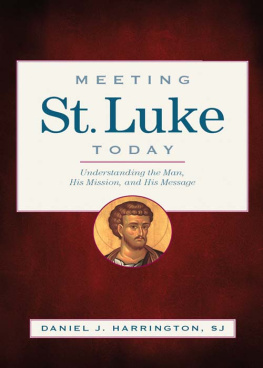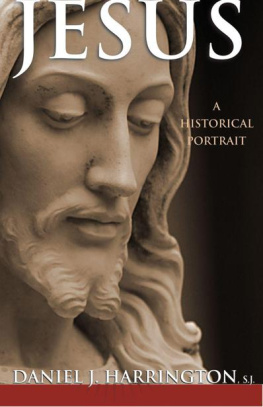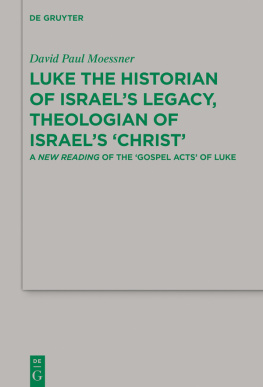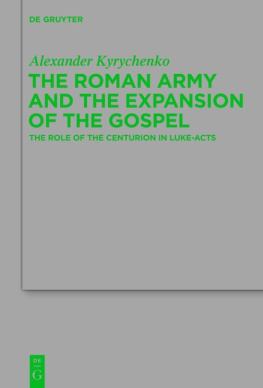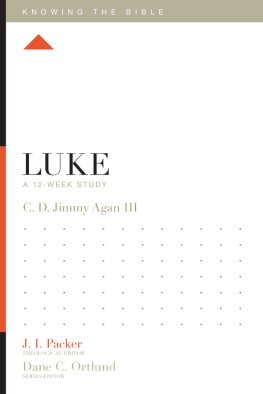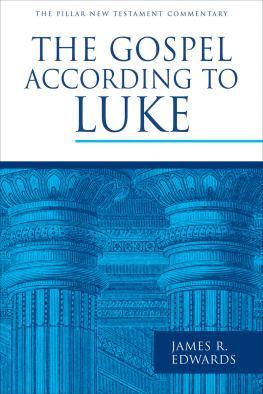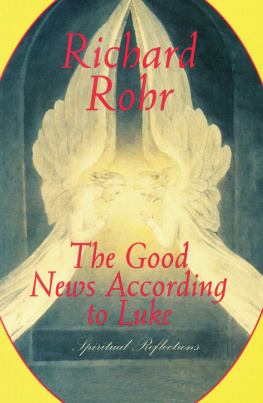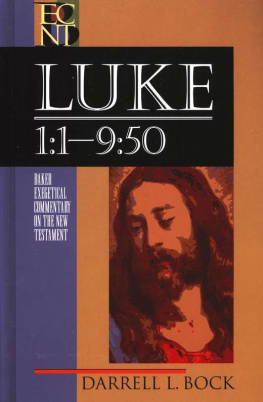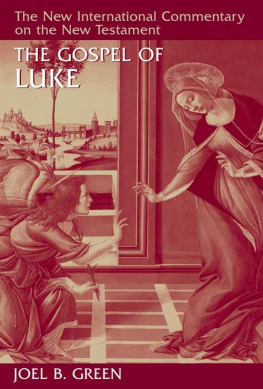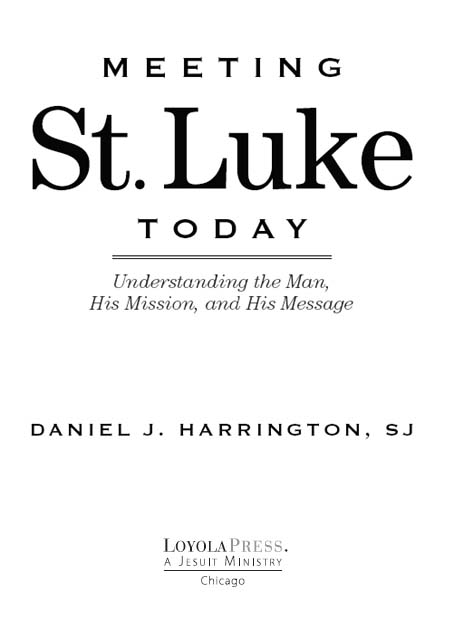2009 Daniel J. Harrington
All rights reserved
Scripture quotations contained herein are from the New Revised Standard Version Bible: Catholic Edition, copyright 1993 and 1989 by the Division of Christian Education of the National Council of the Churches of Christ in the U.S.A. Used by permission. All rights reserved.
In the Year C (2010, 2013, 2016, 2019, 2022, etc.) of the Catholic Churchs lectionary of Scripture readings for Mass, the Gospel passage almost every Sunday is taken from St. Luke. In the New Testament we meet the person we call St. Luke only indirectly. We do so primarily through the two books that have traditionally been ascribed to him: the Gospel according to Luke and the Acts of the Apostles. These two writings are among the longest and most influential books in the New Testament. Indeed, what we call Lukes Gospel is sometimes described as the most beautiful book ever written.
My hope is that this guide to Lukes Gospel may help those who teach, preach, meditate, pray, and discuss the Sunday Scripture readings and that it will open up some of the riches in this attractive and challenging text. I hope as well that this little book might be an entry point into the many treasures that God has given us in the Holy Bible.
After a brief introduction to what we can say with confidence about Luke the Evangelist, this volume provides in six chapters a narrative analysis of the entire Gospel of Luke. These chapters focus on the Gospels words and images, characters, plot, literary forms, indications of time and place, and theological message. The next two chapters examine how Luke handed on and interpreted earlier traditions and how Luke developed key themes throughout his Gospel. The last two chapters suggest how a person might pray on the basis of Lukes texts by using the methods of lectio divina (sacred reading) and Ignatian contemplation, and how in the Year C of the Sunday cycle of Gospel readings Lukes portrait of Jesus can challenge us to go and do likewise (Luke 10:37). Each chapter concludes with two or three questions for reflection and discussion.
I am grateful to Joseph Durepos for the invitation to write this book and to Loyola Press for continuing to promote the many different facets of Jesuit spirituality.
PART ONE
Meeting St. Luke

1
Since many have undertaken to set down an orderly account of the events that have been fulfilled among us, just as they were handed on to us by those who from the beginning were eyewitnesses and servants of the word, I too decided, after investigating everything carefully from the very first, to write an orderly account for you, most excellent Theophilus, so that you may know the truth concerning the things about which you have been instructed.
Luke 1:14
In the main text of the Gospel of Luke, the author never identifies himself as Luke by name (as Paul does in his letters and as John does in Revelation). The title According to Luke seems to have been added later to the main text, sometime in the second century. From at least the second century on, the author of this Gospel has been identified as one of Pauls coworkers, named Luke.
The first verse in the Acts of the Apostles (In the first book, Theophilus, I wrote about all that Jesus did) indicates that the same author wrote both Lukes Gospel and Acts. At several points in Acts (16:1116; 20:516; 21:117; 27:128:16) the writer uses we language, suggesting that he accompanied Paul on his missionary journeys and on his way to Rome. In Pauls letters a person named Luke is described as one of Pauls fellow workers (Philemon 24), the beloved physician (Colossians 4:14), and Pauls faithful friend (2 Timothy 4:11). Christian tradition identifies this Luke as the Evangelist and as the author of two volumes: the Gospel of Luke and the Acts of the Apostles.
However close Lukes relationship to Paul may have been, its important to recognize Lukes distinctive literary and theological approaches to Jesus and the movement he began. This is Lukes Gospel, not Pauls Gospel. A later tradition identifies Luke as a painter. While the history behind this identification is dubious, it makes the point that Luke is a master of details. Often, what is on the surface may seem straightforward and simple but emerges on further inspection to have hidden depth and complexity. Readers need to pay careful attention to the details because Lukes truth is often in the details.
The focus of this book is Lukes biography of Jesus, not the biography of Luke. In fact, we can say little about Lukes biography beyond the few mentions of someone named Luke in the Pauline letters and perhaps the we passages in Acts. But there are several things we can say with great certainty about the Evangelist who wrote Lukes Gospel. The Evangelist whom we call Luke knew the Greek language very well and was capable of writing it in various literary styles. While probably a non-Jew (a Gentile) by birth, the author of Luke-Acts certainly knew a great deal about the Jewish Scriptures, may have been a God fearer (a Gentile associate member of a Jewish synagogue), became a Christian perhaps under Pauls influence, and believed that the Jewish Scriptures were being fulfilled in Jesus and the early Christian movement.
The original audience for which Luke wrote was most likely made up mainly of Gentile Christians. However, in order to understand this Gospel they would have to have known a good deal about Judaism and the Jewish Scriptures. Perhaps they too were God fearers, that is, non-Jews attracted to Judaism by its monotheism, high ethical standards, and rich community life.
There is little consensus about exactly where Luke wrote his Gospel. While earlier scholars placed it in Antioch in Syria or Caesarea in Palestine, now there is a tendency to locate it in Greece or even Rome. Wherever it originated, it soon became a Gospel for all the churches and enjoyed wide circulation throughout the ancient Mediterranean world.
At several points in this Gospel (19:4344; 21:20, 24) the Evangelist seems to refer to the destruction of Jerusalem in AD 70, and his use of Marks Gospel as a source suggests that he composed his Gospel around AD 85 or 90 on the basis of earlier traditions. Lukes account of the spread of the gospel in Acts breaks off rather abruptly around AD 60 with Paul still exercising his ministry of the word while under house arrest in Rome. Luke, however, seems to have completed his two-volume work about twenty-five or thirty years later. Whether he intended a third volume or was satisfied with telling only the story of the earliest years of the Christian movement is debated among scholars.

